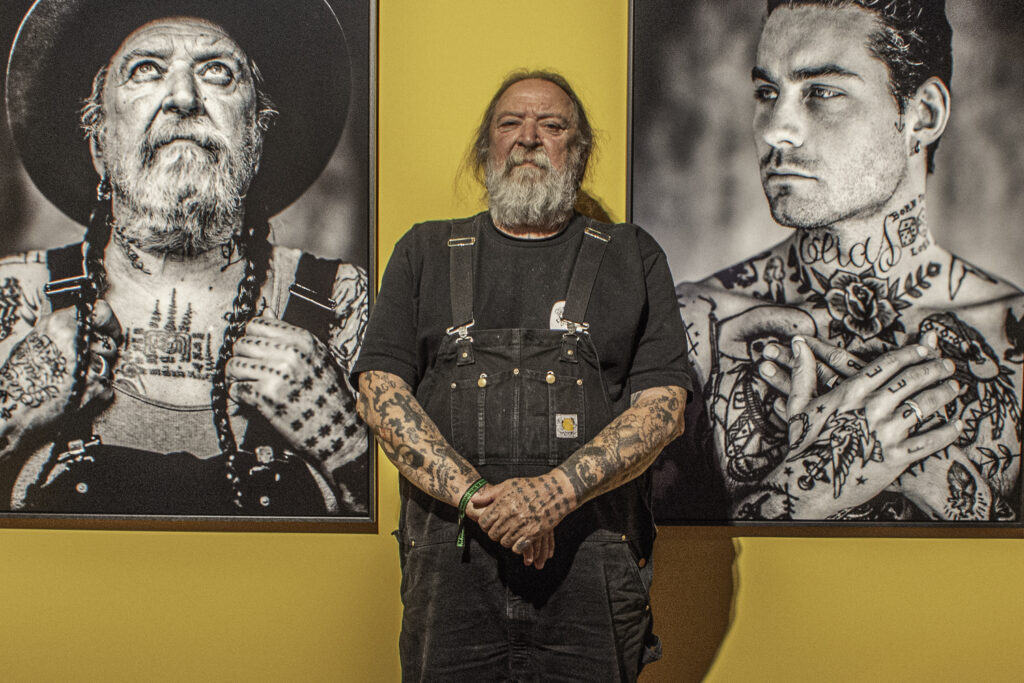Anyone who does not have a tattoo these days seems to be an exception to the rule. The street scene is filled with illustrated arms, legs, necks and sometimes even faces. The tattoo is no longer just a rebellious expression, but rather a fashion accessory. Yet it is much more than a permanent ink drawing: it is cultural heritage. The rich history of this body art is the focus of the exhibition Tattoo in Forum Groningen. A unique combination of history lesson, art exhibition and inspiration.
Text and photography: Annika Hoogeveen
Tattoos are almost as old as humanity itself. For instance, the famous ice mummy Ötzi had several tattoos - presumably intended as a form of pain relief, similar to acupuncture. In ancient Egypt, tattoos were both decorative and protective. Sometimes even ash remains of ancestors were rubbed into the fresh skin wounds, as a form of spiritual bonding.
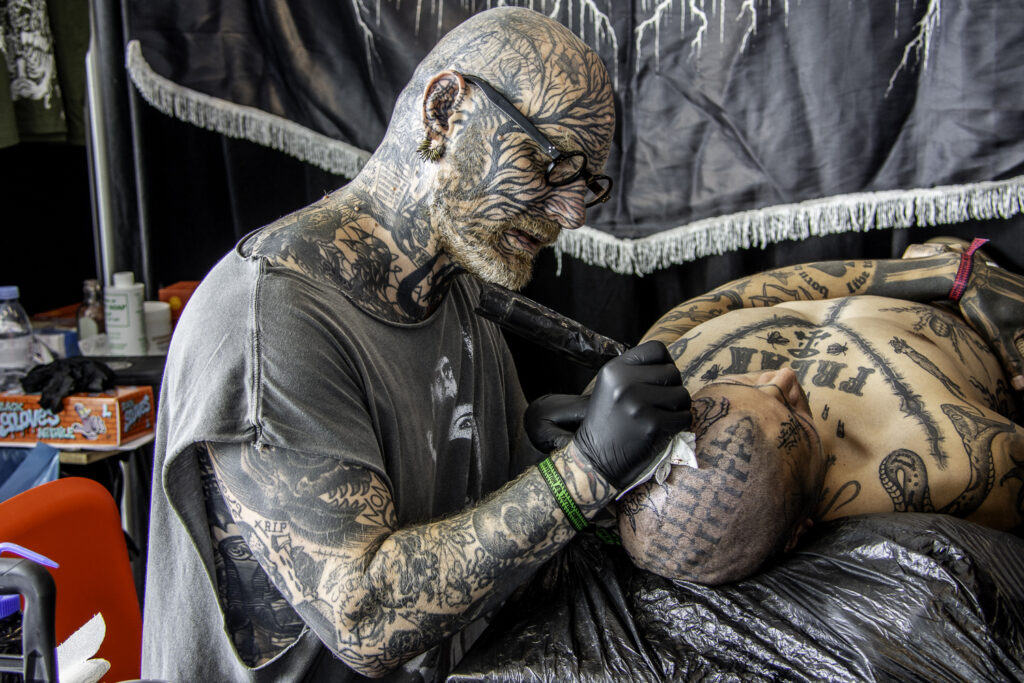 The Last Stop
The Last Stop
The exhibition at Forum Groningen is the latest edition of a travelling exhibition that began ten years ago at Paris' Musée du quai Branly - and has since attracted more than three million visitors. The highlight of this edition was the tattoo convention. Tattoo icon Henk Schiffmacher is one of the biggest loaners. Together with him, I stroll through the exhibition, which includes a replica of his famous tattoo shop. Also special: a Delft Blue "Hall of Fame" of tattoo artists, beautiful prints and a cabinet of curiosities including tattoos inspired by Hieronymus Bosch - set on, it seems, pig's feet.
Hunebed-sleeve
Schiffmacher designed a new sleeve especially for this exhibition, inspired by the hunebed builders of Drenthe and the Funnel Beaker culture. The design was inspired by an heirloom: an urn with mysterious signs on the outside. These symbols formed the basis for the powerful, graphic tattoo. The design proved popular: Schiffmacher already received countless requests for this tattoo. He understands; it refers to a proud piece of Dutch history, not fraught like, say, the 'Golden Age'.
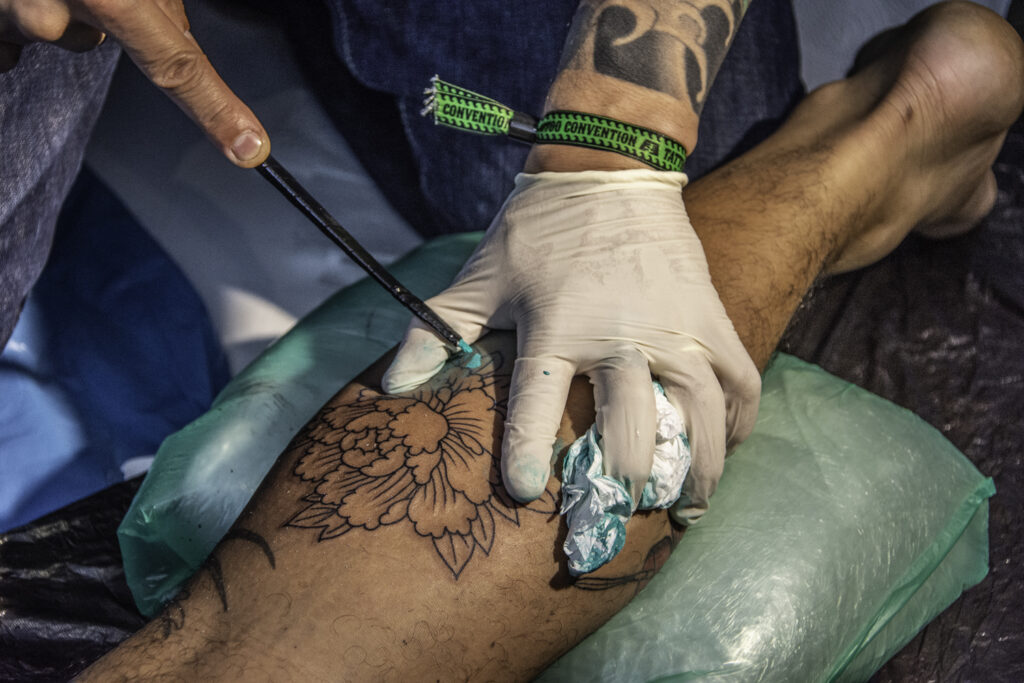 Preserving Heritage
Preserving Heritage
Preserving this kind of cultural heritage is essential. In the 20th century, discussion arose about exhibiting human remains. Since then, tattoos have been preserved on silicone body parts. Not easy, says Schiffmacher: it requires technique to transfer the tattoo beautifully without black marks. Baby oil, for instance, works better than Vaseline. The silicone limbs - like an impressively large leg, based on a French donor - arrive in wooden crates. On the back is a detailed image of Jesus. While tattooing, Schiffmacher was already getting ideas for the next design. He finds working on silicone almost as enjoyable as working on real skin.
Ink as communication
Does he regret some of the tattoos? "I don't do regrets," Schiffmacher says firmly. Of course, some tattoos have turned out better than others, but those who have doubts or are fickle should simply not get involved. Tattooing requires a bit of rebellion. He recalls a woman with 'Victor' on her body. After a relationship break-up, she changed it to 'Victory'. It is reminiscent of Johnny Depp's famous 'Winona Forever' tattoo, which was changed to 'Wino Forever'. For Depp, tattoos are a kind of diary: not text on paper, but ink on skin.
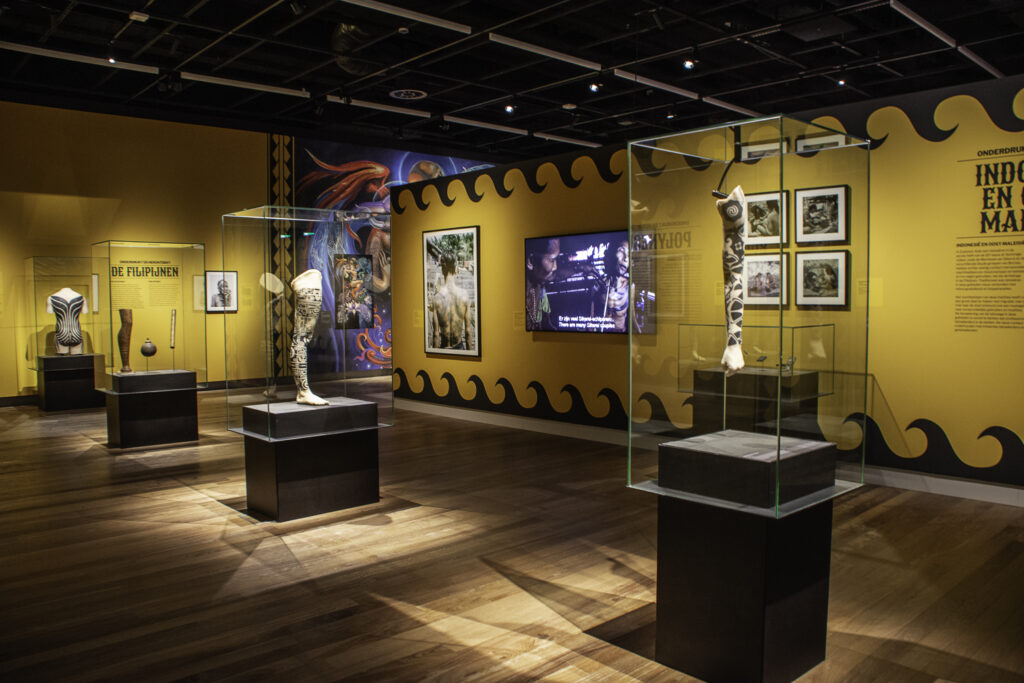 For Schiffmacher, a tattoo has always been a form of communication. A message on the skin. In many cultures, scars or tattoos are symbols of transition, protection or spirituality. In Thailand, for example, the Sak Yant is a magical tattoo with rituals, performed with bamboo stick or needle, and meant to protect against illness or make spiritual contact.
For Schiffmacher, a tattoo has always been a form of communication. A message on the skin. In many cultures, scars or tattoos are symbols of transition, protection or spirituality. In Thailand, for example, the Sak Yant is a magical tattoo with rituals, performed with bamboo stick or needle, and meant to protect against illness or make spiritual contact.
Dark History
But the history of tattoos also has dark sides. From tattooed peoples brought to Europe as curiosities, to the dehumanisation in concentration camps where people were literally given a number. The tattoo as punishment, branding or humiliation.
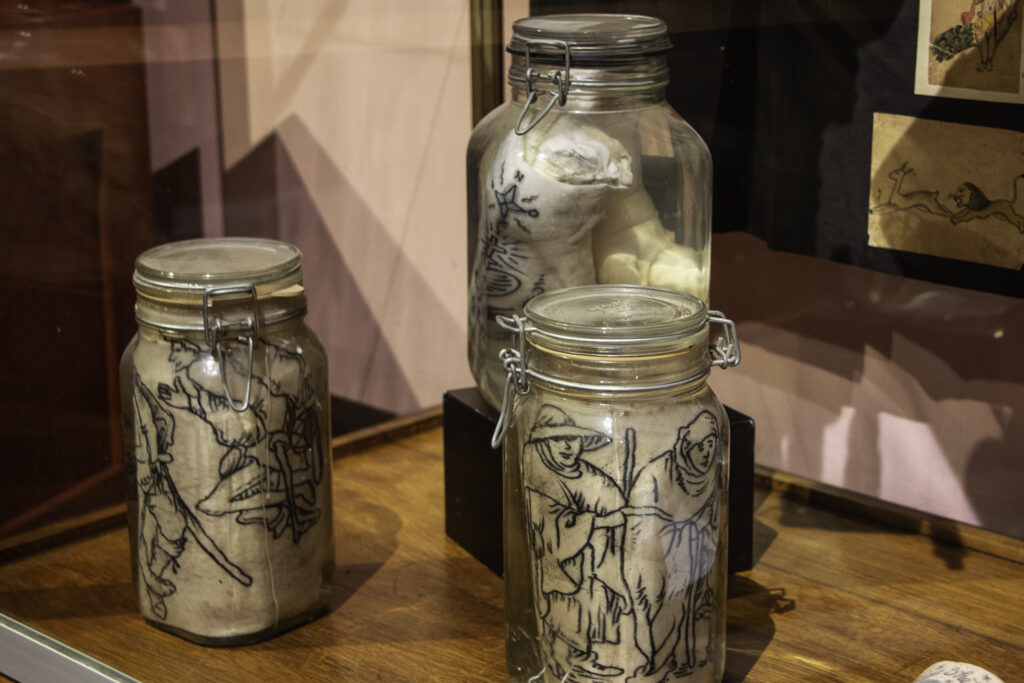 Exhibition as Time capsule
Exhibition as Time capsule
The exhibition at Forum Groningen offers a fascinating overview. From a Buddha statue with the remains of a criminal to a full Yakuza bodysuit. The silicone limbs with tattoos - including one with an impressive octopus - are true works of art. Films about the Sak Yant and other rituals provide context. The colourful murals create atmosphere and enhance the sense of calm. The collection also includes historical books, printing stamps and religious images - remarkable, given the original church ban on this form of body decoration. Whereas Romans described northern European tribes decorating their bodies with coloured patterns, this was considered pagan by Christians. The tattoo as a mirror of values and zeitgeist.
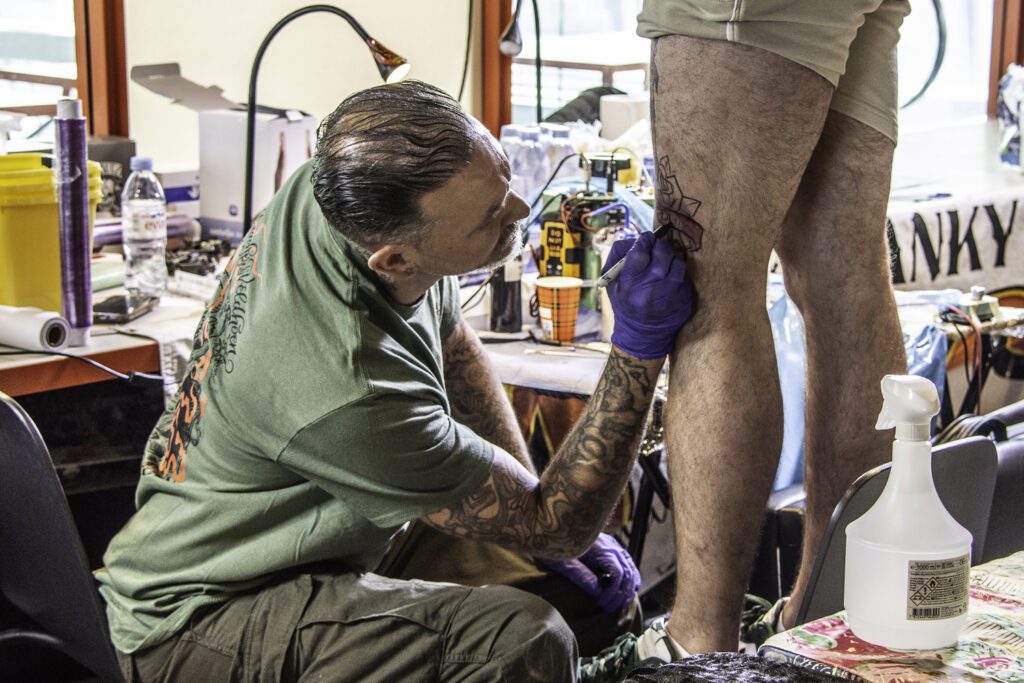 Reflection on Now
Reflection on Now
What does that say about our times? According to Schiffmacher, it has gone completely overboard. Tattoos have become fashionable, sometimes meaningless. There are people walking around who really shouldn't have tattoos. From clownish eyebrows to purple freckles - even tattooing itself has become clinical. The adventure is out. The story is disappearing. But as always, this fashion will one day turn around. And then? That leaves the tattooed rebel.
Tattoo convention
The opening weekend saw an international tattoo convention, organised by Schiffmacher himself. Forty artists from the top of the world gathered in Groningen - largely already fully booked. From traditional techniques with (bamboo) stick to machine needles, everything passed by. And Schiffmacher, machine tattooist par excellence, once again managed to make many people happy with an original 'Schiffmacher'.
TATTOO can still be seen until 4 January 2026 at Forum Groningen.



